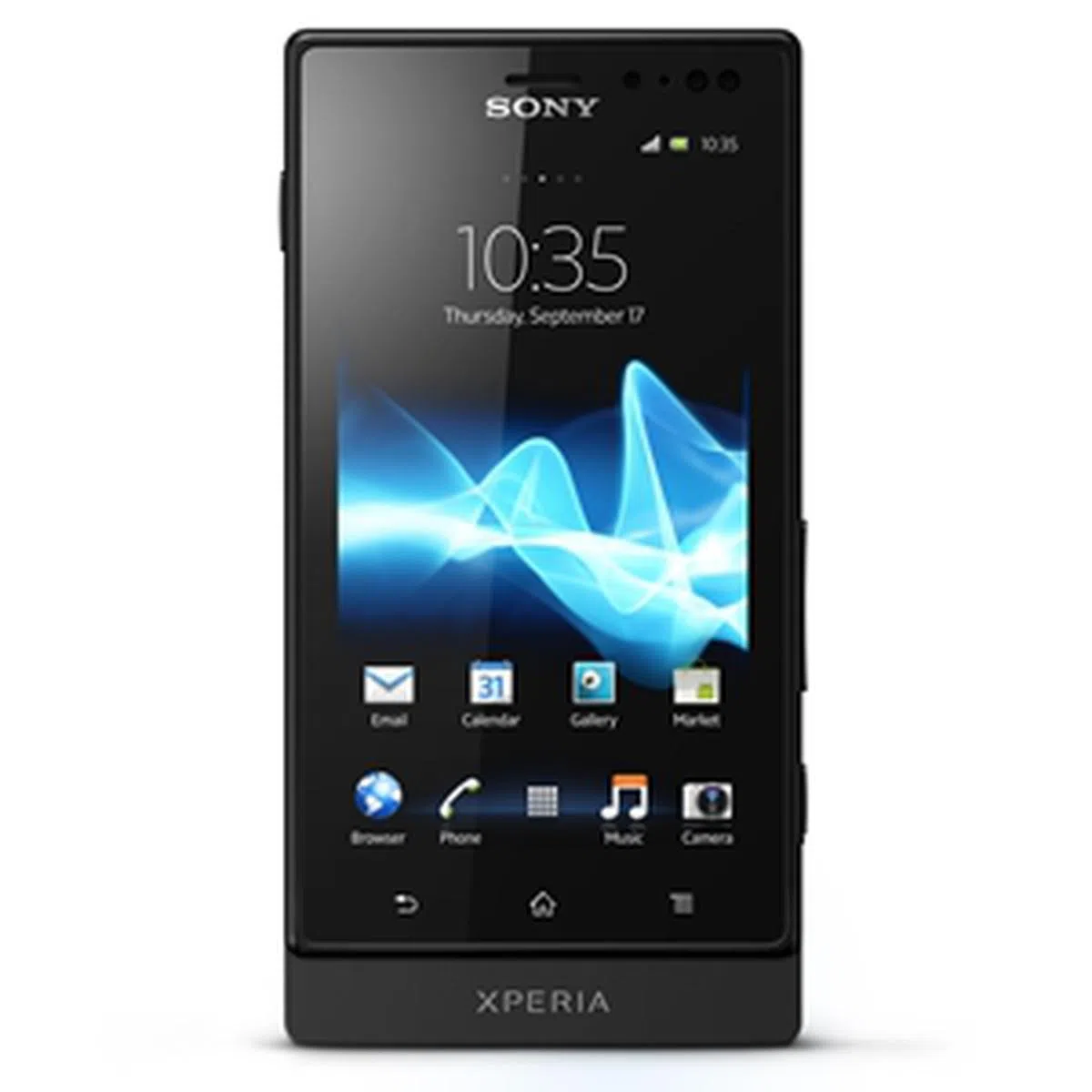Sony Xperia Sola - Magical Touch
The Sony Xperia Sola is the first phone in the world to feature a unique floating touch navigation for an easy web browsing experience. Does this feature have any practical application or is it just a marketing gimmick? Hit the link to find out more.
By HardwareZone Team -
Overview
Besides the Xperia NXT family of phones (the Xperia S, P and U), Sony Mobile Communications also unveiled another Xperia member, the Sola in March 2012. While the Xperia S, P and U have their different target market segments, the Xperia Sola is likely to appeal to those who fancy new technologies and are willing to be early adopters.
Possibly the first smartphone in the world to debut the floating touch technology, the Xperia Sola allows a user to interact with the display of the phone without actually touching it. How does Sony achieve that? Well, let's find out in this review but before we do so, here's a quick look at the specs of the Sony Xperia Sola: -
 | Key highlights of the Sony Xperia Sola
|
Design
The Xperia Sola does not deviate drastically from the design DNA of the Xperia family, sporting the signature boxy shape but doing away with the illuminated plastic strip. In its place are three touch sensitive buttons below the 3.7-inch display that sit one level above the Xperia brand logo. Regardless of the rationale behind such a design, the impact of usability is definitely noticeable especially for users with larger thumbs. You couldn't help but feel the awkardness of your thumb tabbing on an elevated platform.

A thin strip of LED light is found under the display which glows whenever you turn on the main screen.
While the 3.7-inch display attracts smudges and fingerpints easily, the same could not be said for the rest of the chassis which has a matte finish. This keeps fingerprints and smudges at bay although we were constantly on guard against dirt picking up on the milk white back of the Xperia Sola. Weighing a mere 107g and measuring just 9.9mm thin, the Xperia Sola feels very compact in the hands. In terms of handling, we have no problems with the industrial design of the device.

We liked how the Sony Xperia Sola feels in the hands. Its design is well-built yet remains lightweight and compact.
The left side of the Xperia Sola houses the Power button while a 3.5mm audio output jack is found on the top right corner of the device. On the right, you will find the micro-USB port, volume controls and camera shutter button.

It takes some time to get used to putting and removing the battery cover on the Sony Xperia Sola. However, note that the battery is non-removable and you gain access only to insert/remove your SIM card and microSD card.
Features
Similiar to the Xperia P and U, the Xperia Sola runs on Android 2.3 Gingerbread with some slight modifications to the UI. To be honest, we've handled a few Android 4.0 devices (ASUS PadFone, HTC One V, HTC One X, Samsung Galaxy Nexus, Samsung Galaxy S III) so far and Gingerbread-powered phones seem and feel really dated these days. Fortunately, Sony Singapore states the Android 4.0 update for the Xperia Sola should arrive sometime in Q3, which means anytime from July to September.

The user interface looks no different from the rest of the Xperia lineup. You will see the usual five-panel home screen where you slide to the side to view the apps installed on the Xperia Sola.
One of the main touted features of the Xperia Sola is the floating touch technology which is co-developed with Cypress Technologies. What it basically does is to enable the Xperia Sola to register your finger input up to 20mm above the screen. This will result in a cursor-like movement on the Xperia Sola where you use to highlight links and "click" on the exact link you want. For the detailed explanation of the technicalities of the floating touch technology, you can check out this article at Sony Developer World.

For now, you can only utilize the floating touch technology in the default web browser. The 3.7-inch display of the Xperia Sola makes such implementation practical but whether will it hold true for bigger screen devices remains to be seen.

The Xperia Sola is also among the growing list of smartphones that come with NFC capability. You will receive two Xperia SmartTags as part of the sales package of the Xperia Sola.
As mentioned in an earlier article, "NFC and SmartTag Demo with Sony Xperia S", a SmartTag is basically a round token that works with any NFC-enabled smartphone. Tapping the lower portion of the Xperia Sola on the SmartTag will launch a set of pre-configured profiles such as launching Facebook app, turning on Wi-Fi and Bluetooth.

You can set up to 10 pre-configured actions to be launched upon tapping on a SmartTag.
Performance
The Sony Xperia Sola is powered by ST-Ericsson NovaThor U8500 dual-core 1GHz processor and 512MB RAM, which seems modest in the Android realm where the rave is all about the quad-core HTC One X and Samsung Galaxy S III.
Due to its position as a mid-tier smartphone, we will be comparing the Xperia Sola against the dual-core competitors such as the Samsung Galaxy Nexus, HTC Sensation XE and the LG Optimus 2X in the Quadrant benchmark.
Device | Sony Xperia Sola | Samsung Galaxy Nexus | HTC Sensation XE | LG Optimus 2X |
CPU | ST-Ericsson NovaThor U8500 dual-core 1GHz | TI OMAP 4460 dual-core 1.2GHz | Qualcomm Snapdragon MSM 8260 dual-core 1.5GHz | NVIDIA Tegra 2 dual-core 1GHz |
GPU | Mali 400 GPU | PowerVR SGX540 | Adreno 220 | ULP GeForce |
RAM | 512MB | 1GB | 768MB | 512MB |
OS | Google Android 2.3 | Google Android 4.0 | Google Android 2.3 | Google Android 2.2 |

The score of 2254 placed the Xperia Sola somewhere in the middle of the competition. While it managed to topple the Android 4.0-touting Galaxy Nexus, it failed to match up to the Tegra 2-powered LG Optimus 2X and Qualcomm Snapdragon-equipped HTC Sensation XE.
As mentioned in our review of the Sony Xperia P, the higher clock speed and the possibility of better optimization on the Qualcomm chipset contributed to the HTC device gaining the upper hand. However, numbers aren't everything. Daily usage-wise, its performance was snappy and responsive, with apps opening fairly fast and multitasking was a breeze. So in actual usage, all phones actually delivered similarly good usability.
Imaging Performance
The Sony Xperia Sola is equipped with a 5-megapixel rear autofocus camera, a single LED flash and handles HD video recording up to 720p resolutions. However, it lacks a front facing camera for video calls. As usual, we will subject the Xperia Sola to our imaging test to see how well can it handle photo taking tasks: -

The color reproduction is accurate with a nice level of saturation, and the camera captured sufficient details. Overall, image quality is above average for the Sony Xperia Sola. Check the below close-up shots for details.
Although we had hardly any issues with the imaging performance of the Xperia Sola, we did not like the feel and operation of the physical camera shutter button located on the bottom right side of the phone. It is simply too stiff for our liking, and with such a characteristic, pressing the shutter button all the way runs the risk of the user accidentally shaking the camera when taking photos.
On a positive note, we quite liked the Fast Capture feature on the Xperia Sola. You can activate the camera and take the shot straight from the lock screen of the Xperia Sola by simply pressing the shutter button for a few seconds. According to Sony, the process takes just over a second.
We tested the Fast Capture feature on several occasions and found it to be a tad more useful than the camera shortcut found on the lock screens of other phones. Fast Capture can also be found in other recent Sony phones such as the Xperia S, P and U.
Battery Mileage
Our testing methodology involves looping a video with a 480 x 800 pixels resolution under the following conditions:
- Screen brightness and volume at 100%
- Wi-Fi and Bluetooth connections active
- Constant data stream via email and Twitter
Specifications/Device | Sony Xperia Sola | Samsung Galaxy Nexus | HTC Sensation XE | LG Optimus 2X |
Processor |
|
|
|
|
Display Size |
|
|
|
|
Display Type |
|
|
|
|
Display Resolution |
|
|
|
|
Dimensions |
|
|
|
|
Weight |
|
|
|
|
Battery |
|
|
|
|

Low battery mileage continues to plague the Xperia line of smartphones as the Xperia Sola came in last with a timing of slightly less than four hours of battery uptime in intensive usage. Some may argue that the Xperia Sola comes with a smaller battery capacity of 1320mAh but one cannot ignore the fact that its competitors come with bigger screens and processors with higher clock speeds. Fortunately, while using the phone during normal day-to-day operations, the device could last close to one day. So its probably not too bad, but it certainly could have done much better in our streneous testing to better reflect intensive usage.
Conclusion
Based on the recent portfolio of Sony Xperia phones introduced, it is apparent that the company isn't looking at competing directly with the heavyweights (Apple, HTC and Samsung) head-to-head. Instead, Sony is differentiating its products with unique features such as Fast Capture, Floating Touch technology and design appeal in the case of the Xperia Sola.
As interesting as its Floating Touch technology could be, it is not the killer feature that will give the Xperia Sola in any strategic edge over the competition. After all, the Apple iPhones are still the hot favorites among consumers today despite having a smaller 3.5-inch screen. For the Android camp, bigger screen phones are increasingly popular with users judging from the roaring sales of the Samsung Galaxy Note. That's not to say that the Sola is in any disadvantage with its screen size, but rather, its lacking the X-factor or a killer function to entice would-be buyers. Currently, the Xperia series is banking heavily on its design and the complete Sony ecosystem for best usability.
At S$588, the Sony Xperia Sola is a decent mid-range smartphone that has a solid build quality and good handling. Performance-wise, it's tough recommending the Xperia Sola over the other phones such as the LG Optimus 2X which offer a better battery life, a bigger display, 1080p video recording and an 8-megapixel rear camera. As it is more than a year old, you are able to get the LG phone at a lower street price. If you are looking for an ICS-powered smartphone, the Samsung Galaxy Nexus could be a better choice with a larger screen, but it's priced much higher as well.
That leaves the Xperia Sola an ideal upgrade for existing Sony/Sony Ericsson users who prefer to have a similar design and character on a phone that has a very handy size. The bottom line is that there's nothing wrong about it, but neither is there a very strong plus point going for it.

Perhaps, when Sony delivers the Android 4.0 update in Q3, the Sony Xperia Sola would be more attractive to the consumers. We also hope that power consumption would miraculously improve for the better with the update, but that's just wishful thinking for now.
Our articles may contain affiliate links. If you buy through these links, we may earn a small commission.

